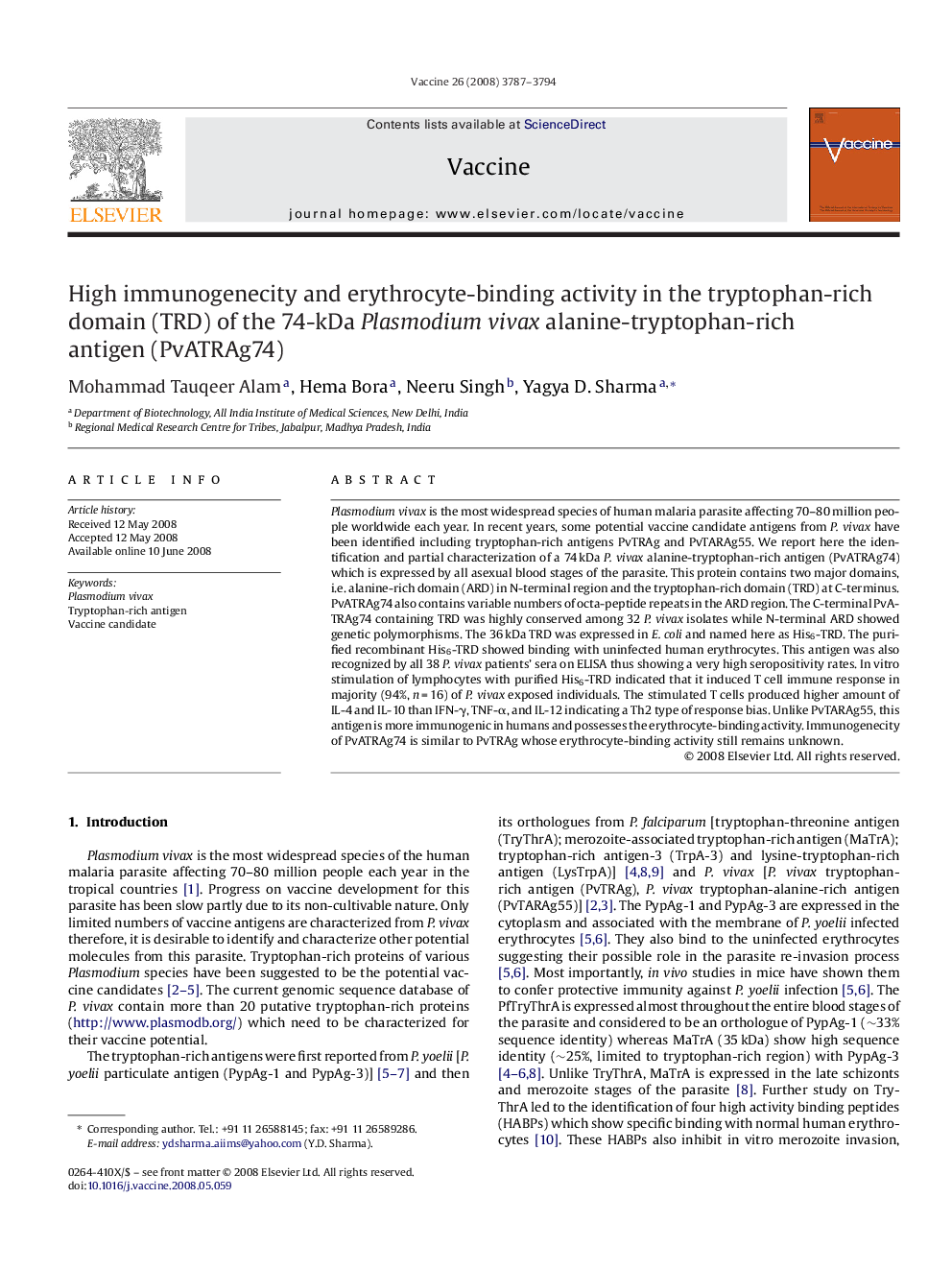| Article ID | Journal | Published Year | Pages | File Type |
|---|---|---|---|---|
| 2407599 | Vaccine | 2008 | 8 Pages |
Plasmodium vivax is the most widespread species of human malaria parasite affecting 70–80 million people worldwide each year. In recent years, some potential vaccine candidate antigens from P. vivax have been identified including tryptophan-rich antigens PvTRAg and PvTARAg55. We report here the identification and partial characterization of a 74 kDa P. vivax alanine-tryptophan-rich antigen (PvATRAg74) which is expressed by all asexual blood stages of the parasite. This protein contains two major domains, i.e. alanine-rich domain (ARD) in N-terminal region and the tryptophan-rich domain (TRD) at C-terminus. PvATRAg74 also contains variable numbers of octa-peptide repeats in the ARD region. The C-terminal PvATRAg74 containing TRD was highly conserved among 32 P. vivax isolates while N-terminal ARD showed genetic polymorphisms. The 36 kDa TRD was expressed in E. coli and named here as His6-TRD. The purified recombinant His6-TRD showed binding with uninfected human erythrocytes. This antigen was also recognized by all 38 P. vivax patients’ sera on ELISA thus showing a very high seropositivity rates. In vitro stimulation of lymphocytes with purified His6-TRD indicated that it induced T cell immune response in majority (94%, n = 16) of P. vivax exposed individuals. The stimulated T cells produced higher amount of IL-4 and IL-10 than IFN-γ, TNF-α, and IL-12 indicating a Th2 type of response bias. Unlike PvTARAg55, this antigen is more immunogenic in humans and possesses the erythrocyte-binding activity. Immunogenecity of PvATRAg74 is similar to PvTRAg whose erythrocyte-binding activity still remains unknown.
